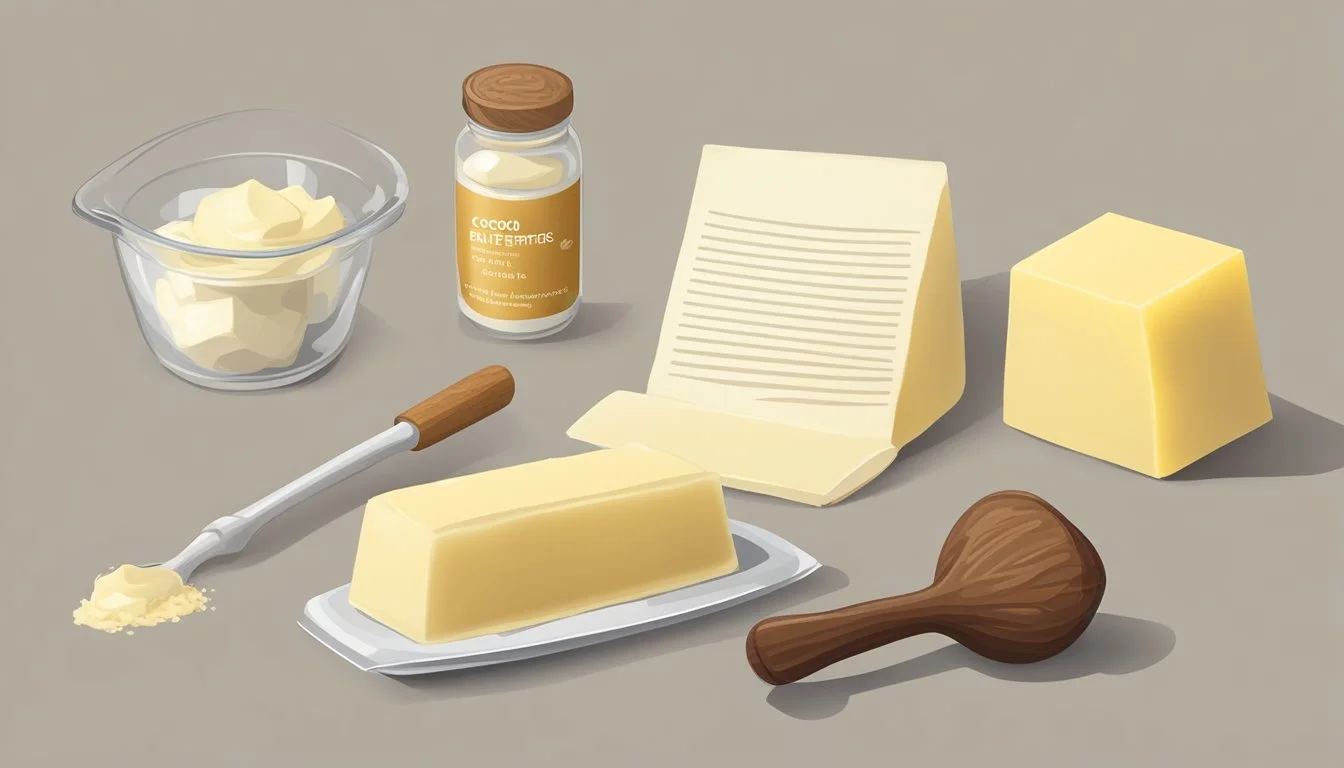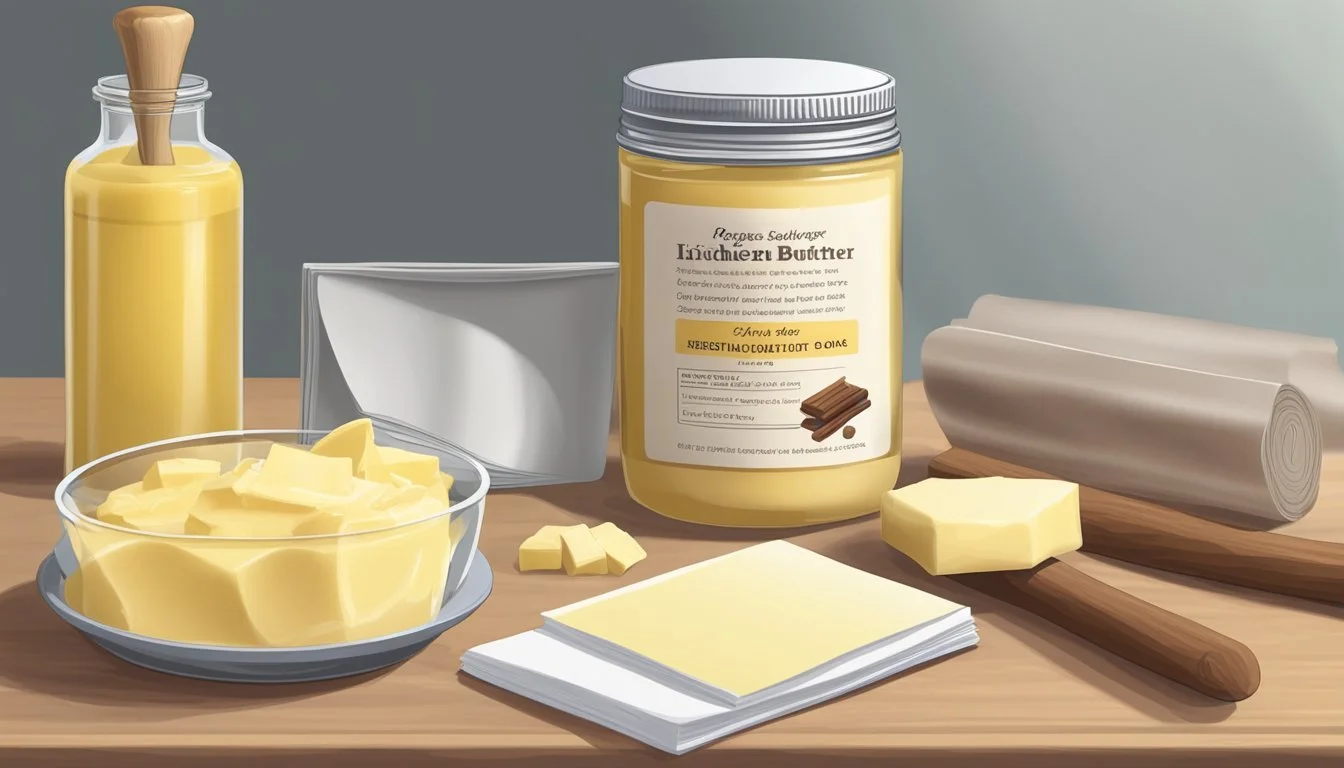How to Substitute Cocoa Butter for Butter in Baking and Cooking
Cocoa butter, a crucial ingredient in the confectionery industry, is prized for its smooth texture and melting profile compatible with the human body temperature. This vegetable fat is extracted from the cacao bean and imparts a subtle chocolate (What wine goes well with chocolate?) flavor and aroma to the products it graces. However, dietary restrictions, accessibility, and cost can prompt the search for substitutes. When a recipe calls for the unique properties of cocoa butter and it's not available, there are reliable alternatives that can mimic its characteristics.
The exploration for a cocoa butter substitute can depend heavily on the desired application. For instances where the melting characteristic is paramount, such as in chocolates or creams, finding an alternative with a similar fat composition is crucial. In contrast, when cocoa butter is used for its flavor or texture in baked goods, some flexibility in selection exists. Potential replacements, each with their distinct properties, include oils and fats like coconut oil, which remains solid at room temperature and can provide the necessary richness in many recipes.
When substituting cocoa butter in a recipe, it is imperative to consider both the physical and flavor attributes of the replacement. Given that cocoa butter has a distinctive taste and mouthfeel, the substitute should not only replicate the fat content but also complement the overall flavor profile of the dish. While options like dairy butter might offer the requisite fat content, others such as certain plant-based oils can be deodorized to reduce their intrinsic flavors, thereby coming closer to a neutral presence like that of cocoa butter. Choosing the right substitute requires a balance between taste, texture, and functionality in order to achieve a satisfying result.
Understanding Cocoa Butter
Cocoa butter is a crucial ingredient in chocolate making and various beauty products, valued for its unique properties, nutritional aspects, and the rich aroma it imparts.
Properties and Uses
Cocoa butter, extracted from the cocoa bean, possesses a pale-yellow color and a delicate chocolate aroma that enhances the sensory experience of products it is used in. It has a melting point that allows it to solidify at room temperature, giving chocolate its firmness and allowing it to melt smoothly in the mouth. Cocoa butter is also frequently used in skin care due to its moisturizing properties, improving skin elasticity and serving as a key component in lotions and creams.
Health and Nutrition
In terms of nutrition, cocoa butter contains a mix of saturated and unsaturated fats. It is notable for its content of palmitic acid, a saturated fat, yet it also includes beneficial unsaturated fats which constitute approximately 75% of its fat content. The presence of these unsaturated fats, along with vitamin E, plays a role in the health benefits associated with moderate cocoa butter consumption, such as supporting heart health.
Cocoa Butter in Chocolate Production
Within chocolate production, cocoa butter is derived from cocoa liquor during the chocolate making process. Its role is pivotal in determining the final texture and snap of the chocolate. It enables a smooth and even distribution of other ingredients and influences the chocolate's viscosity. Pure cocoa butter and its substitutes, such as coconut oil and palm oil, must closely match the physical and chemical properties of cocoa butter to successfully mimic these characteristics in chocolate products.
Exploring Butter and Its Characteristics
Butter plays a pivotal role in baking and nutrition, providing distinct flavor and texture, while its saturated fat content and fatty acid composition contribute to its unique properties.
Activity in Baking
In baking, butter is valued for its ability to create a tender crumb and golden crust. It's the saturated fats within butter that facilitate the trapping of air during the creaming process, which is crucial for the leavening of cakes and cookies. The presence of fat also prevents the formation of gluten, resulting in a softer texture. Moreover, the melting point of butter enhances the mouthfeel of baked goods, providing a rich, smooth sensation.
Nutritional Profile
Butter is composed primarily of saturated fats, which contribute to its solid consistency at room temperature. The table below summarizes its nutritional composition, emphasizing the high-fat content that delivers butter's characteristic mouthfeel.
Nutrient Amount per 100g % Daily Value* Total Fat 81g 124% Saturated Fat 51g 255% Monounsaturated Fat 21g N/A Polyunsaturated Fat 3g N/A Cholesterol 215mg 72%
Note: *Percent Daily Values are based on a 2,000 calorie diet.
The rich flavor of dairy butter is due to the fatty acids and milk solids that it contains. These components not only contribute to its taste but also play a role in how it interacts with other ingredients during the cooking or baking process, affecting not just nutrition but sensory attributes as well.
Best Substitutes for Cocoa Butter
When cocoa butter isn't an option, one can consider various natural oils and fats or commercial alternatives as substitutes. Each alternative offers a distinct texture and flavor profile that can complement different recipes.
Natural Oils and Fats
Coconut Oil : Typically solid at room temperature, coconut oil stands out as a top substitute for cocoa butter due to its smooth texture. For cooking purposes, it is recommended to use refined coconut oil to prevent altering the taste of the dish due to its less pronounced flavor.
Shea Butter : Extracted from the nuts of the shea tree, shea butter is a vegan-friendly alternative that provides a creamy consistency similar to cocoa butter. It is particularly beneficial in recipes that demand a thick, luxurious feel.
Mango Butter : Derived from the kernels of mangoes, mango butter offers a mild, sweet aroma and can substitute cocoa butter in desserts and baking. It's best for those seeking a subtle, fruity hint in their delicacies.
Olive Oil : A liquid at room temperature, olive oil can replace cocoa butter to infuse a distinct, fruity flavor. However, it is more suitable for savory dishes due to its liquid state and characteristic taste.
Palm Oil : While palm oil can serve as a cocoa butter substitute with a similar melting point, it's important to source sustainably produced palm oil due to environmental concerns related to its cultivation.
Commercial Alternatives
Coconut Butter : Coconut butter includes pureed meat of coconuts and presents a denser, richer option. It retains a pronounced coconut flavor and is effective in recipes where that flavor is desired.
Soy Lecithin : Employed as an emulsifier in many commercial products, soy lecithin doesn't replicate the texture of cocoa butter but can help achieve the desired consistency in chocolate making and baking when used in combination with other fats.
Employing Substitutes in Recipes
When substituting cocoa butter in recipes, one must consider the impact on flavor and texture, as well as any dietary restrictions. The correct choice of substitute can provide a similar richness and mouthfeel to that of cocoa butter.
Adjusting for Flavor and Texture
Substitutes for cocoa butter need to provide a creamy, smooth texture akin to the original ingredient. Two main options stand out:
Refined Coconut Oil: It's solid at room temperature and can mimic the smoothness of cocoa butter without adding a coconut flavor, making it a preferential choice for cooking and baking. Use a 1:1 substitution ratio, but be mindful of its lower melting point which could affect the texture of the final product.
Cacao Butter: Extracted from cocoa beans just like cocoa butter, cacao butter retains a chocolatey flavor and melts similarly, making it an excellent choice for a direct substitution. It's particularly suitable for vegan recipes as it preserves the creamy mouthfeel that is typical of cocoa-based products.
Adapting for Health and Dietary Needs
Individual dietary needs can lead to the need for special substitutes:
Avocado: A health-conscious replacement, it can be used in a 1:1 ratio in baking to provide a creamy texture while catering to those who need dairy-free or vegan options.
Nut Butters: These can replace cocoa butter in recipes to add a different flavor profile while offering a smooth consistency. They work well in no-bake recipes or can be incorporated into smoothies.
For kosher recipes, ensure that substitutes like unsalted butter or white chocolate comply with kosher dietary laws. Regular butter can be used, but it will change the richness and flavor due to its dairy content and lower fat percentage compared to cocoa butter.
Substitution Techniques
In substituting cocoa butter for regular butter, it's essential to understand the differences in melting behavior and fat content. Achieving the desired creamy or smooth texture in your recipe depends on proper technique and consistency.
Melting and Mixing
When melting cocoa butter as a substitute for regular butter, the chef should consider the smoke point of both fats. Cocoa butter has a higher smoke point compared to regular butter, meaning it can withstand higher temperatures without burning. This property makes it suitable for high-heat recipes. To substitute, cocoa butter should be gently melted over low heat to avoid scorching. Once melted, it can be mixed into the recipe as one would with melted unsalted butter, ensuring a seamless blend into the other ingredients for a smooth texture.
Measurement and Consistency
The substitution of cocoa butter for regular butter should be made by weight, not by volume, due to the differences in density. Cocoa butter is denser than regular butter; therefore, one must use less cocoa butter when substituting. The guide below provides a general conversion ratio:
Regular Butter Cocoa Butter 1 cup 3/4 cup
Consistency in the finished product is vital. Since cocoa butter is almost 100% fat content, with no water or milk solids, it yields a richer, creamy texture. For recipes that rely on the water content of regular butter for moisture, chefs may need to adjust liquid ingredients to maintain the proper consistency.
Additional Considerations
When substituting cocoa butter for butter, it's important to understand the differences in composition and the effect this has on culinary applications and cosmetic use. These considerations can impact the outcome of recipes and the effectiveness of skincare products.
Culinary Applications
Cocoa butter and butter differ significantly in their fatty acid profiles, which can influence both the texture and flavor of culinary creations. Butter contains a notable amount of saturated fat, but it's also characterized by the presence of fatty acids that contribute to its creamy consistency and rich taste. When substituting butter for cocoa butter, it's critical to consider these differences, especially in baking and chocolate making where precision is key.
Baking: Butter's lower melting point can change the texture of baked goods.
Chocolate Making: The lack of cocoa solids in butter can affect the flavor profile and smoothness of homemade chocolate.
Cosmetic and Skincare Use
In the realm of cosmetics and skincare, cocoa butter is a revered moisturizer known for its hydrating and healing properties. While both cocoa butter and butter contain saturated fats, which are beneficial for skin hydration, cocoa butter is non-comedogenic, meaning it doesn’t block pores, a highly desirable trait for skincare products. Here's a brief comparison in skin-related applications:
Cocoa Butter Substitute in Lotion: While butter can be used, it may not provide the same consistency, and can feel heavier on the skin.
Property Cocoa Butter Butter Absorption Easily absorbed by skin Can feel greasy Non-comedogenic Yes No Skin Protection Provides a barrier Lesser degree of protection
Skin Care: Products containing cocoa butter typically impart a pleasant fragrance and are less likely to irritate the skin when compared to butter-based products.
Conclusion
When replacing cocoa butter in various recipes, chefs and home cooks have multiple alternatives to consider. The chosen substitute often depends on the desired outcome in flavor and texture, as well as dietary preferences or restrictions.
Coconut oil is a popular substitution for cocoa butter in cooking and baking due to its similar fatty composition and ability to solidify at room temperature. While it offers a rich texture, it is advisable to opt for refined coconut oil to avoid an overwhelming coconut flavor in dishes where a neutral taste is preferred.
For those who are vegan or have dietary restrictions, exploring plant-based oils and butters like shea or avocado affords flexibility in both savory and sweet creations. While these substitutes may alter the flavor profile to some extent, they can make excellent alternatives from a health and lifestyle standpoint.
Here are considerations when substituting cocoa butter:
Flavor: Some substitutes, like coconut oil, carry their own distinctive flavors which can impact the taste of the final dish.
Texture: Alternatives may affect the mouthfeel and consistency, with some providing a creamier or oilier texture than cocoa butter.
Usage: Precise substitution ratios can vary depending on the recipe, be it for cooking or baking; always begin with an equal substitution and adjust as needed.
Ultimately, while each cocoa butter substitute brings its own unique properties, they offer a versatility that can be harnessed effectively across a wide range of recipes. It's important for individuals to experiment and find the best option that caters to their specific cooking or baking needs while maintaining the integrity of the dish's intended experience.






